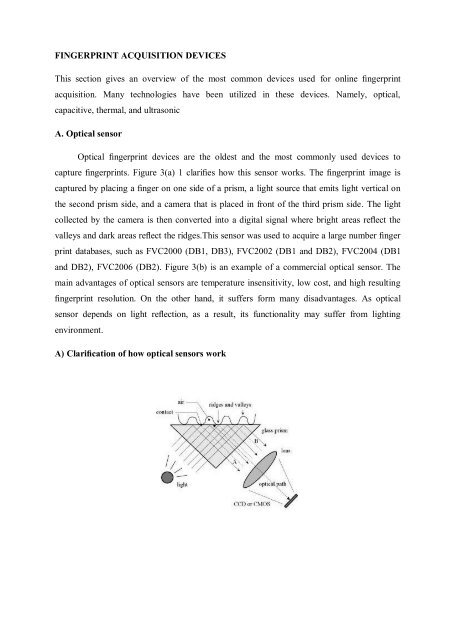combinepdf (5)
Create successful ePaper yourself
Turn your PDF publications into a flip-book with our unique Google optimized e-Paper software.
FINGERPRINT ACQUISITION DEVICES<br />
This section gives an overview of the most common devices used for online fingerprint<br />
acquisition. Many technologies have been utilized in these devices. Namely, optical,<br />
capacitive, thermal, and ultrasonic<br />
A. Optical sensor<br />
Optical fingerprint devices are the oldest and the most commonly used devices to<br />
capture fingerprints. Figure 3(a) 1 clarifies how this sensor works. The fingerprint image is<br />
captured by placing a finger on one side of a prism, a light source that emits light vertical on<br />
the second prism side, and a camera that is placed in front of the third prism side. The light<br />
collected by the camera is then converted into a digital signal where bright areas reflect the<br />
valleys and dark areas reflect the ridges.This sensor was used to acquire a large number finger<br />
print databases, such as FVC2000 (DB1, DB3), FVC2002 (DB1 and DB2), FVC2004 (DB1<br />
and DB2), FVC2006 (DB2). Figure 3(b) is an example of a commercial optical sensor. The<br />
main advantages of optical sensors are temperature insensitivity, low cost, and high resulting<br />
fingerprint resolution. On the other hand, it suffers form many disadvantages. As optical<br />
sensor depends on light reflection, as a result, its functionality may suffer from lighting<br />
environment.<br />
A) Clarification of how optical sensors work




